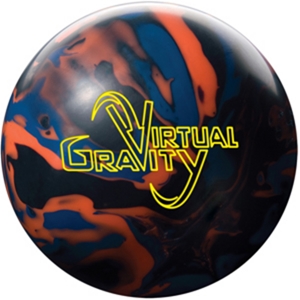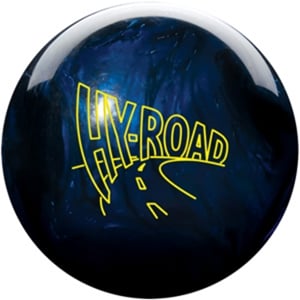Have you wondered if there is a difference between Turbo and Vise grips? Have you heard of the Vacuum Grip? We will cover these questions asked by viewers like you.
Details for Vacuum Grip Installation (from Turbo 2-n-1 Grips):
Vacuum Grip
Best uses for Vacu fit: Bowlers who suffer from swelling or may be in between sizes.
Create a Vacuum Grip with this Simple Drill Technique.
NOTE: Please read instructions fully before drilling. For Tech Support call: 1-888-2N1-GRIP.
- Use 1 1/32" drill bit. Hole should be 1/16" larger than the recommended insert o.d.
- Drill hole 1" deep.
- Replace 1 1/32" drill bit with 31/32" or recommended insert outside diameter (for stronger vacuum use smaller drill bit i.e. 61/64 for
standard outside diameter insert) - Drill hole the full depth of insert (Quad inserts 1 3/4", Standard 2-N-1 1 3/8")
- You have now created a cone at the bottom of the hole.
- Install finger insert. Glue bottom of grip into smaller hole. When creating a vacuum grip you must use at least 2 sizes smaller than standard finger tip size. Grip will expand to fit inside hole diameter.
- Apply adhesive (Turbo Zip Plus-45 recommended) to the front of hole, between finger insert and bowling ball. ONLY apply glue to the front wall.
Product mentioned in this episode:
Turbo 2-N-1 Grips Quad Finger Inserts, Ebonite Ultra Slide, Brunswick Power Slide, Ebonite Shoe Slider, Brunswick Clear Top Shoe Slider.
Episode 5 discussed different types of bowling shoes.
One of our Twitter Followers, Tim Owens, sent us a question about his Columbia 300 Scout Reactive Red/Gold. He already uses it on dry lanes, but noticed on more oily lanes that the ball did not react as well. We address the potential cures.
We also introduce MyBowlingCoach, brought to you by Fred Border, Jerri Edwards, and Ron Hatfield. MyBowlingCoach is running a promotion with bowlingball.com to offer users a free 2 week trial, which will get you:
- 2 Week Free Trial of MyBowlingCoach
- Unlimited access to 36 of MyBowlingCoach Lessons
- Access to Q&A
- Coach Ken’s Corner
- Alex’s Euro Angle
- and More
To get your free trial, please vist http://www.mybowlingcoach.com/bowlingball and enter code ‘bowlingballtrial’. Please share your thoughts on this promotion in the comments section below.
Hammer Raw Hammer Acid was released earlier this week. We are going to have video of the ball reaction up soon. We were really pleased with this bowling ball.
Have you ever wondered about the differences in bowling shoes? There are so many to choose from. And yes, color and material are important, but did you know that the bottom of the shoe is almost more important?
Episode #5 takes you inside the world of Bowling Shoes.
Our best episode yet!
In this episode we discuss the parts of a bowling ball and the symbols on the surface.
Starting with the Coverstock (The surface of the bowling ball), you will find 2 or 3 symbols. The Pin, Center of Gravity (CG), and if the core (also known as the weight block) is assymmetrical there will be a Mass Bias symbol.
The Pin is a circle created with colored plug material and designates the top of the core. During manufacturing the core is suspended in the bowling ball by a hanger pin. Once removed there is a void in the bowling ball. Manufacturers used to fill the hole with the same color as the ball so that you didn’t know where it was. As ball drilling became more of a science, it was necessary to “see" where the core was. Filling the hanger pin hole with a different color allowed ball drillers to essentially “see" inside the bowling ball.
The CG is the point on the ball where all four quadrants are in balance. As you move the CG mark left, right, up, and down, you start creating imbalances in the static weight of the ball. The USBC limits the amount of imbalance to 1 ounce left or right of the center line and 1 ounce up or down from the midline.
The Mass Bias is only noted on assymmetrical cores. This point denotes where the core is closest to the cover stock. It is the second most important piece of information used when laying out your bowling ball.
Information that is not listed on the bowling ball itself is the Radius of Gyration(RG). The RG determines how fast or slow the ball will be able to spin. A great example is that of an ice skater. When they do a spin and hold their arms out, they are create a higher RG and spin slower. As they bring their hands in towards their body, they create a lower RG and spin faster. The RG of bowling balls do not change, as if the ice skater’s arms were in a cast.
There are four new releases. Two of them (Storm Virtual Gravity and Storm Hy-Road) are already in stock and shipping.
The Track Rising SE is scheduled to be released on November 26, 2008.
The Hammer Raw Hammer Acid is scheduled to be released on December 2, 2008.
We are offering TalkBowling Viewers a discount, but you will have to view the episode for details… 😉



